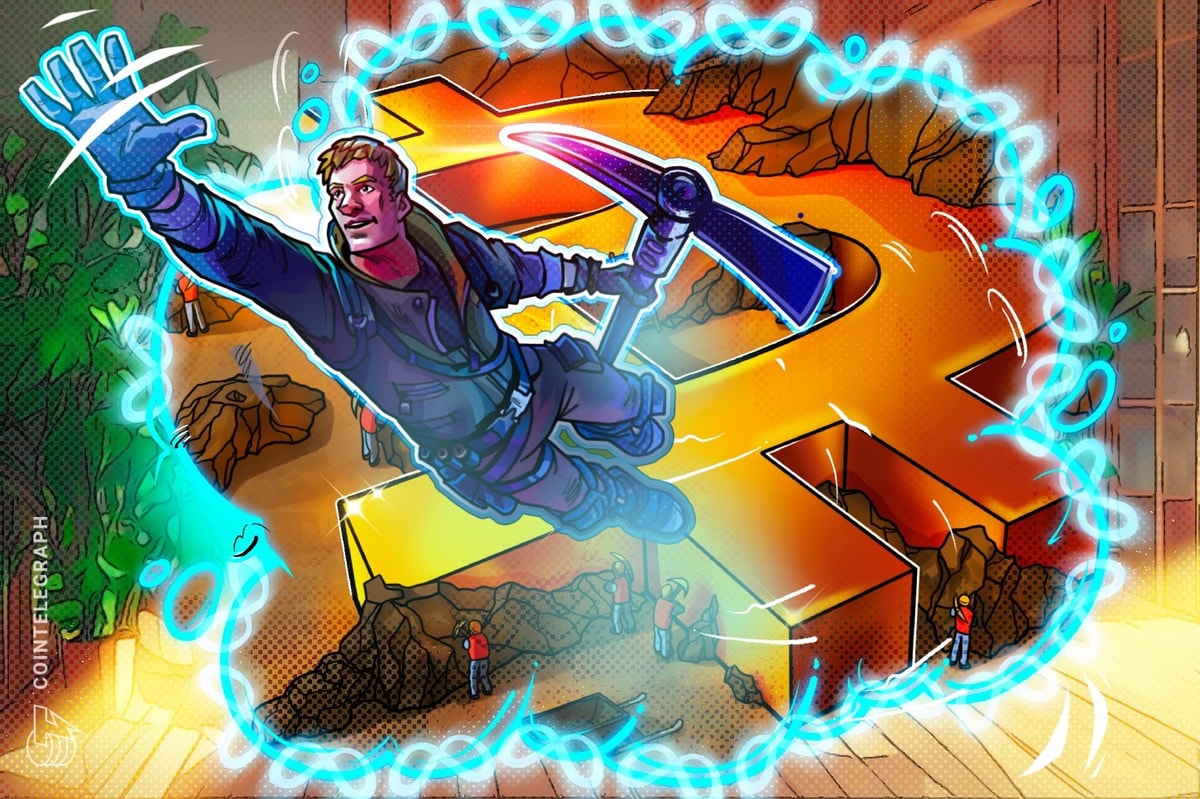
This story comes from GG.
Your Web3 Gaming Power-Up
Ethereum layer-2 scaling networks like Arbitrum and Immutable X are battling it out to provide a home for the next wave of Web3 games—but later this year, a so-called “layer-3” network will enter the arena with a specific goal of catering to game creators.
Revealed today, Xai is billed as a layer-3 scaling network built via Arbitrum’s existing layer-2 network architecture, which itself sits atop the Ethereum mainnet.
It’s being created via the permissionless Arbitrum Orbit tech stack that lets anyone deploy a custom network on top of Arbitrum, and the Xai website notes plans to launch a token for the network.
Xai is being developed in collaboration with Offchain Labs, the original creator and primary developer behind Arbitrum. Xai will be overseen by the Xai Foundation, but with “support and servicing” by Offchain Labs. It’s also being created with help from game developer Ex Populus, which will deploy the first games planned to launch on the network.
What’s the value of a “layer-3” network on top of Arbitrum, a network that was already designed to deliver faster and cheaper transactions than Ethereum’s own mainnet? Furthermore, why does this matter for crypto-infused video games?
The Xai website claims that the network “introduces parallel processing and advancements for enhanced scalability, efficiency, and cost reduction.” That’s on top of Arbitrum’s existing layer-2, which handles transactions away from the Ethereum mainnet to do so at a lower cost and greater volume via its optimistic rollup tech. It’s designed as a “decentralized game console,” the Xai Foundation notes.
Tobias Batton, co-founder and CEO at Ex Populus, told Decrypt that going a layer deeper will provide even lower fees to transact, along with faster transactions that potentially enable smoother game experiences without noticeable delays and interruptions.
“The cheaper and faster we can make things,” Batton explained, “the better experience we can provide users.”
For Batton and Ex Populus specifically, he added that the Xai network’s planned approach to account abstraction—that is, hiding or otherwise downplaying the technical crypto elements—will enable token-powered games that can reach a broader audience.
Early adopters will tolerate the complexities of crypto games, but the masses may not.
“We think traditional gamers should be able to come to these games and have a frictionless experience—or at least an experience that they’re familiar with,” Batton said. “The blockchain technology should be essentially backend technology that you don’t necessarily even need to know is there, that is providing you with certain benefits.”
In practice, the Xai layer-3 network sounds very similar in approach to an Avalanche subnet or a Polygon supernet, in that it’s a dedicated instance of the network focused on a particular project or ecosystem—in this case, crypto games. A dedicated sub-network effectively helps insulate such projects from the demands of the wider network, potentially benefiting all corners.
“Dedicated chains allow for parameters to be changed to optimize for specific use cases in ways that the public chains cannot provide,” Offchain Labs Chief Strategy Officer A.J. Warner told Decrypt. “As demand for blockspace continues to grow, the public instances will be insufficient for global demand.”
Final Form, the debut game from Ex Populus, will also be the very first game to roll out on Xai, Batton said. It’s a fully on-chain digital card-based “auto-battler” that will feature artwork from various Web3 brands and also celebrities—including retired boxer Mike Tyson, a partner of the studio.
Ex Populus is also preparing a second PC game called LAMOverse, a colorful online shooter tied to NFT avatars. It’s connected to the physical LAMO toy brand that has released collectibles in partnership with popular video game streamers like Ninja and DrDisrespect.
Batton said that over the past two years, Ex Populus has built on Polygon and Solana, as well as the Ethereum mainnet. His team struggled to find a solution it thought was not only secure and stable, but also primed for the average gamer to use.
Xai was built to meet the studio’s needs, but can also help other game developers build Web3 games on Arbitrum.
“When we tested this solution, it met all of our requirements,” he said. “It was the first solution we found that we were able to do everything that we wanted and provide that excellent experience to the player.”
Stay on top of crypto news, get daily updates in your inbox.
Read More: decrypt.co









 Bitcoin
Bitcoin  Ethereum
Ethereum  Tether
Tether  XRP
XRP  Solana
Solana  USDC
USDC  Dogecoin
Dogecoin  Cardano
Cardano  TRON
TRON  Lido Staked Ether
Lido Staked Ether  Wrapped Bitcoin
Wrapped Bitcoin  Sui
Sui  Wrapped stETH
Wrapped stETH  Chainlink
Chainlink  Avalanche
Avalanche  Stellar
Stellar  Shiba Inu
Shiba Inu  Hedera
Hedera  LEO Token
LEO Token  Hyperliquid
Hyperliquid  Bitcoin Cash
Bitcoin Cash  Toncoin
Toncoin  Litecoin
Litecoin  Polkadot
Polkadot  USDS
USDS  WETH
WETH  Pi Network
Pi Network  Monero
Monero  Wrapped eETH
Wrapped eETH  Bitget Token
Bitget Token  Pepe
Pepe  Binance Bridged USDT (BNB Smart Chain)
Binance Bridged USDT (BNB Smart Chain)  Ethena USDe
Ethena USDe  Coinbase Wrapped BTC
Coinbase Wrapped BTC  WhiteBIT Coin
WhiteBIT Coin  Uniswap
Uniswap  Bittensor
Bittensor  Dai
Dai  NEAR Protocol
NEAR Protocol  Aptos
Aptos  Aave
Aave  OKB
OKB  Ondo
Ondo  Jito Staked SOL
Jito Staked SOL  Cronos
Cronos  BlackRock USD Institutional Digital Liquidity Fund
BlackRock USD Institutional Digital Liquidity Fund  Ethereum Classic
Ethereum Classic  Internet Computer
Internet Computer